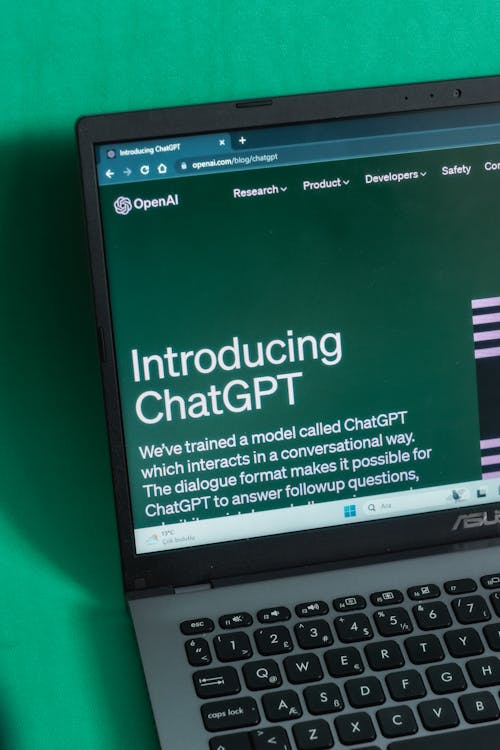Site Reliability Engineering (SRE) is undergoing rapid transformation, driven by escalating demands for higher reliability, faster incident resolutions, and optimized operational efficiency. ChatGPT and generative AI technologies are emerging as game-changing innovations—but can they truly revolutionize how SRE teams function?
Dive into these 7 proven, practical ways that ChatGPT and AI-driven tools are reshaping SRE, complete with actionable insights, tooling recommendations, and compelling real-world examples.
1. Automated Incident Management
Overview: AI-driven incident management leverages ChatGPT to swiftly detect, analyze, and resolve incidents through intelligent data analysis, pinpointing root causes, and automating communication workflows.
Tooling:
- PagerDuty integrated with ChatGPT
- ServiceNow Predictive Intelligence
Real-World Application: Netflix employs AI-driven incident response systems to rapidly pinpoint outages, dramatically reducing Mean Time to Repair (MTTR) through automated diagnostics and streamlined communications.
2. AI-Enhanced Dynamic Runbooks
Overview: AI-enhanced runbooks dynamically update documentation based on real-time incident outcomes, significantly reducing manual efforts and ensuring information stays accurate and relevant.
Tooling:
- Confluence with AI-powered ChatGPT integrations
- Opsgenie’s adaptive runbook functionality
Real-World Application: Google Cloud actively integrates AI-driven runbooks, continuously incorporating lessons learned from previous incidents to enhance reliability and agility.
3. Predictive Anomaly Detection
Overview: ChatGPT integration with monitoring platforms proactively identifies subtle anomalies based on historical data patterns, enabling early intervention and outage prevention.
Tooling:
- Prometheus with AI-driven anomaly detection
- Grafana’s machine learning integration
Real-World Application: Spotify utilizes predictive analytics powered by AI to detect issues proactively, ensuring uninterrupted service delivery and exceptional user experiences.
4. Real-Time Interactive Knowledge Base
Overview: An AI-powered knowledge repository using ChatGPT provides instant, context-rich information, drastically improving the speed and accuracy of decision-making during incidents.
Tooling:
- Slack integrated with ChatGPT
- Jira Service Management AI assistant
Real-World Application: Microsoft Azure deploys a ChatGPT-based knowledge system for rapid knowledge dissemination, significantly enhancing team responsiveness during critical incidents.
5. Streamlined Communication and Team Collaboration
Overview: ChatGPT-powered communication bots streamline messaging across geographically dispersed teams, reducing confusion and improving clarity in high-pressure situations.
Tooling:
- Slackbot enhanced with ChatGPT
- Microsoft Teams AI-based assistants
Real-World Application: Atlassian implements AI communication tools to synchronize global incident response teams, maintaining effective collaboration and timely updates.
6. Intelligent Observability
Overview: ChatGPT’s advanced analytics capabilities interpret complex logs, metrics, and tracing data, providing actionable insights that simplify infrastructure performance management.
Tooling:
- Datadog integrated with AI analytics
- Elasticsearch’s AI-based anomaly detection
Real-World Application: Uber uses AI-driven observability to manage vast data streams efficiently, swiftly identifying and addressing potential infrastructure bottlenecks worldwide.
7. Continuous Learning and Skill Development
Overview: Interactive, personalized training simulations powered by ChatGPT enable SRE professionals to safely practice managing complex scenarios, enhancing their skills without operational risks.
Tooling:
- Pluralsight’s AI-driven labs
- ChatGPT-powered simulated training environments
Real-World Application: Amazon Web Services (AWS) incorporates ChatGPT-driven simulations into their SRE training programs, significantly improving team readiness and performance.
Practical Steps for Adopting AI in Your SRE Workflow:
- Gradually incorporate AI-driven solutions into existing incident management processes.
- Employ predictive analytics for proactive infrastructure monitoring and risk mitigation.
- Continuously educate your SRE teams on leveraging AI tools for optimal outcomes.
Summary
AI technologies like ChatGPT aren’t merely futuristic concepts—they’re already reshaping Site Reliability Engineering practices. Adopting these powerful, proven AI applications empowers your SRE teams to enhance reliability, streamline operations, and embrace proactive methodologies.
Embrace the AI revolution today and redefine what’s achievable for your SRE team.


